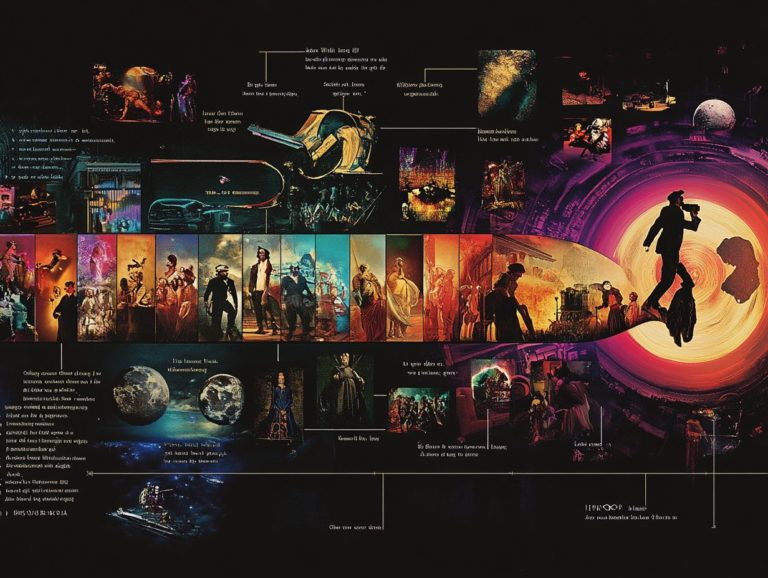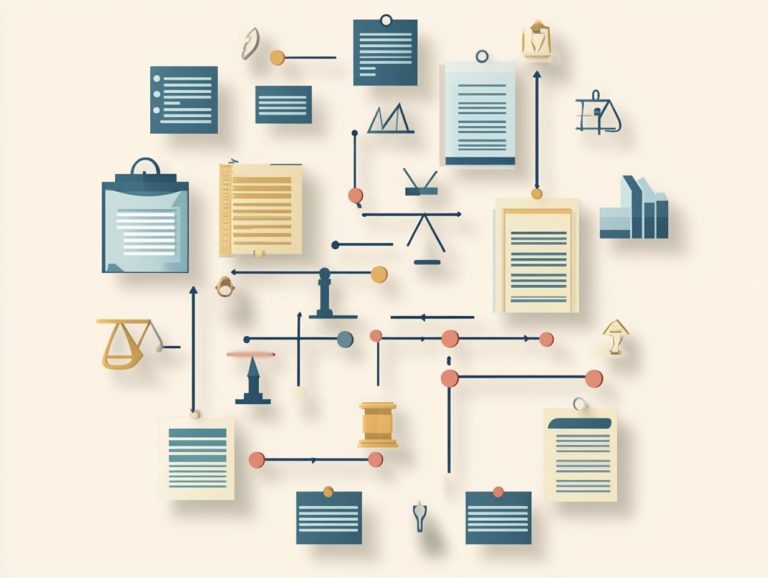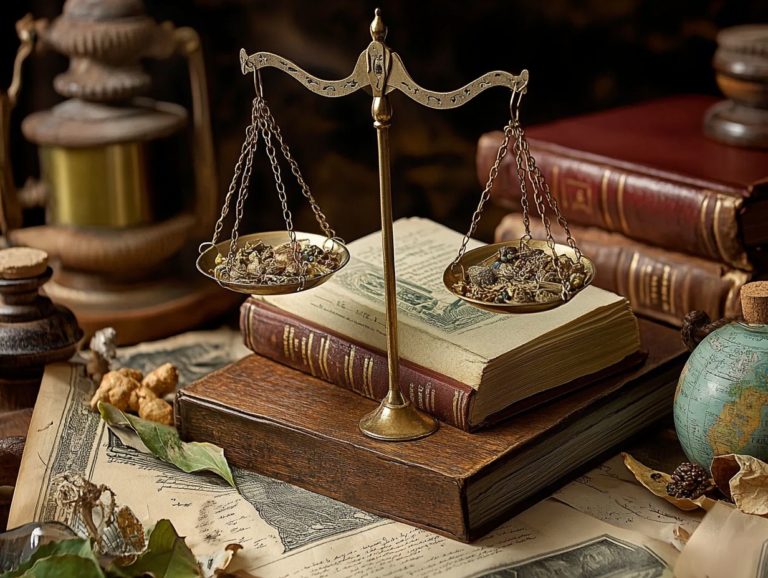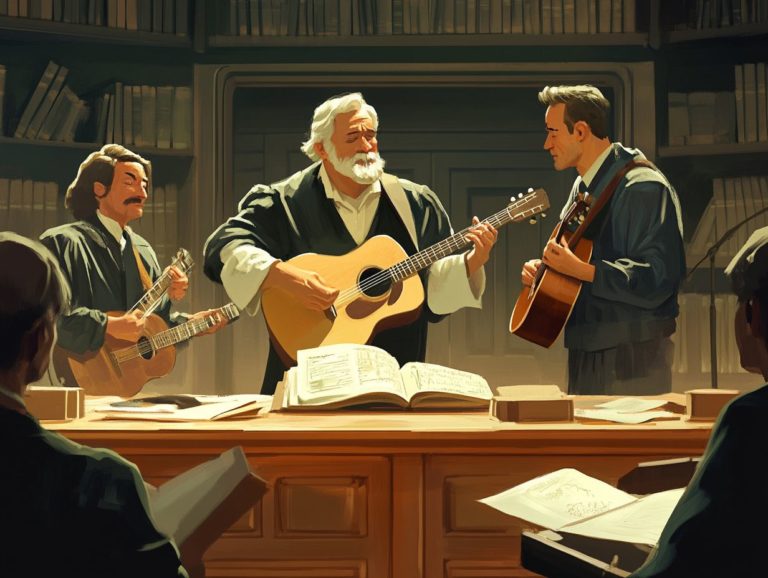The Challenges of Copyright in the Age of Streaming
Are copyright laws keeping up with the rapid rise of streaming? In today s digital landscape, the complicated link between copyright laws and streaming services has ignited a vigorous debate. As content consumption and distribution methods evolve, so do the challenges that copyright owners and streaming platforms face.
This exploration delves into the historical context and purpose of copyright, the influence of streaming on traditional media, and the obstacles that creators and services encounter in safeguarding intellectual property.
Join us on this journey as we uncover potential solutions to these contemporary copyright challenges.
Contents
- Key Takeaways:
- Overview of Copyright Laws in the Digital Age
- The Impact of Streaming on Copyright
- Challenges Faced by Copyright Owners
- Challenges Faced by Streaming Services
- Possible Solutions to Copyright Challenges
- Frequently Asked Questions
- What are the main challenges of copyright in the age of streaming?
- How does the rise of streaming services impact traditional media industries?
- What challenges do streaming platforms face in terms of copyright?
- What are some potential solutions to the challenges of copyright in the age of streaming?
- How does the global nature of streaming affect copyright challenges?
- What role do users play in the copyright challenges of streaming?
Key Takeaways:
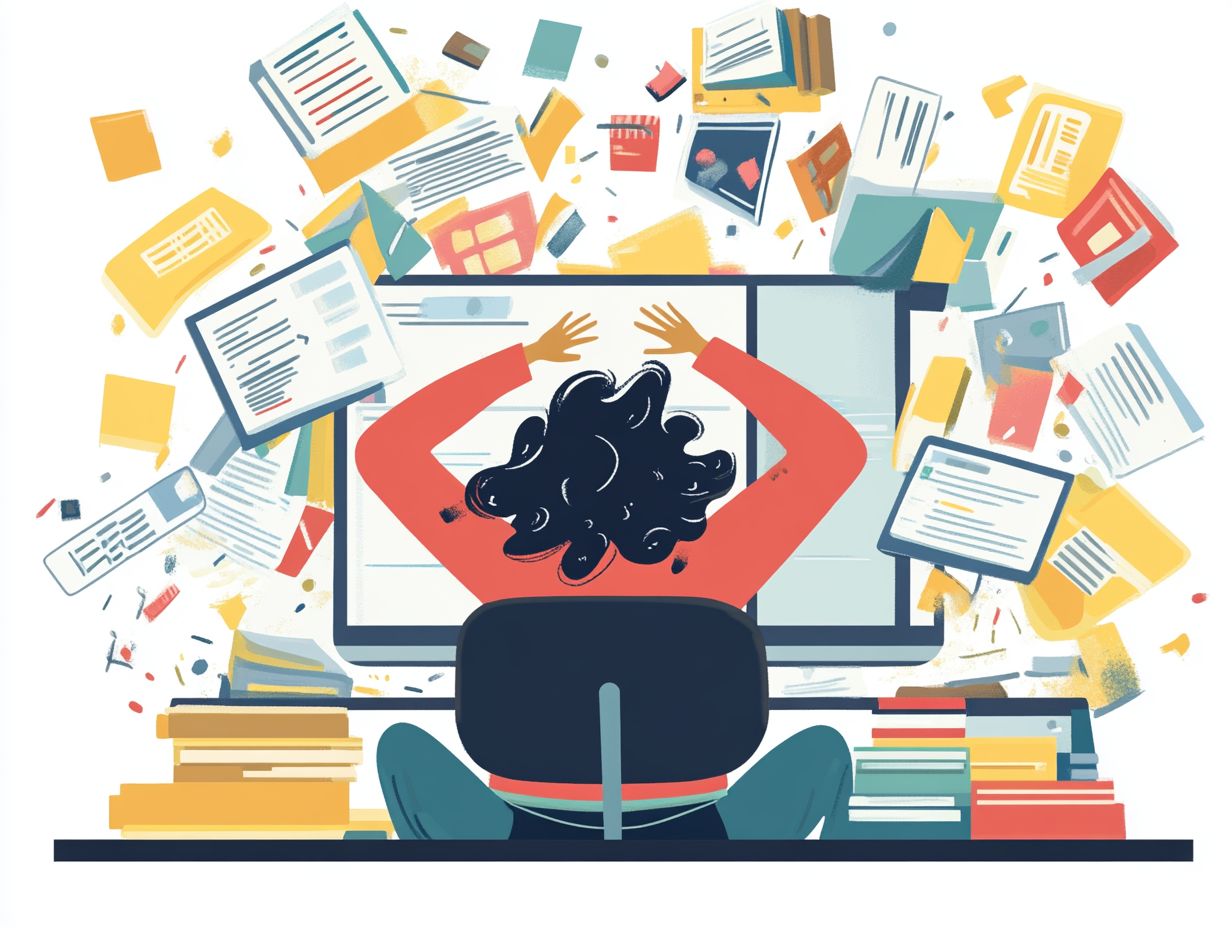
Streaming dramatically changes how we consume media, posing challenges for copyright owners in protecting their work. As highlighted in discussions about the future of copyright in the digital age, piracy and unauthorized use are major issues, while streaming services struggle with complex laws and licenses. We urgently need creative solutions through collaboration and updated regulations to address these challenges.
Overview of Copyright Laws in the Digital Age
This overview offers an in-depth understanding of how copyright regulations have evolved, safeguarding creative works and their creators’ rights.
Copyright law seeks to balance the interests of rights holders and consumers, ensuring that artistic creations receive legal protection while fostering innovative ideas and collaboration.
In a world shaped by technology and user-generated content, the intricacies of intellectual property present both challenges and opportunities for stakeholders engaged in content creation and distribution.
History and Purpose of Copyright
The history of copyright law dates back to the early days of creative industries, protecting artistic works and nurturing a culture of innovation. As creativity blossomed, the necessity for a legal framework emerged, ensuring that creators could benefit from their efforts.
Early legislation, like the Statute of Anne in 1710, marked a pivotal moment by granting authors exclusive rights for a limited time. Landmark cases, such as Baker v. Selden in 1880, emphasized the critical distinction between ideas and their expression.
These developments paved the way for today’s copyright laws, protecting authors, artists, and inventors against unauthorized use. This framework allows them to enjoy the fruits of their creativity while safeguarding the rich tapestry of culture and knowledge.
The Impact of Streaming on Copyright
The influence of streaming on copyright is significant, reshaping how we consume and distribute content while presenting challenges related to licensing agreements and online piracy.
With platforms like Netflix, Spotify, and YouTube dominating the media landscape, traditional copyright laws struggle to keep pace. This can lead to copyright infringement issues and complications in digital rights management, which refers to the systems that protect creators’ rights online.
In this interconnected environment, we urgently need innovative solutions that harmonize user experience with the protection of creators’ rights, fostering consumer trust and ensuring fair compensation.
Changes in Consumption and Distribution
Changes in consumption and distribution have transformed the media landscape, with streaming platforms fundamentally reshaping how we access and experience content.
This shift has also resulted in an explosion of available content, allowing readers to explore a wide array of genres and formats at leisure.
While this surge enhances visibility for creators, it also brings challenges, particularly regarding consumer protection and copyright infringement. The accessibility of numerous platforms can create an environment where intellectual property rights are overlooked, leading to unauthorized sharing or reproduction of content.
As readers navigate this new landscape, striking a balance between enjoying a wealth of options and ensuring a fair marketplace remains a pressing concern.
Challenges Faced by Copyright Owners

Copyright owners encounter a myriad of challenges in the digital age. Piracy and copyright infringement jeopardize their creative works and financial returns.
As online piracy evolves with increasing sophistication, enforcing copyright laws becomes a labyrinthine endeavor. This often results in substantial losses for creators and rights holders alike.
To uphold creators’ rights amidst these complexities, one must cultivate a nuanced understanding of the current landscape. It’s essential to devise effective strategies to combat unauthorized use, ensuring the protection of artistic works.
Piracy and unauthorized use present constant challenges that threaten the integrity of intellectual property. They also jeopardize the economic viability of creative industries.
From unauthorized streaming of music and movies to rampant file sharing on peer-to-peer networks, various forms of online piracy undermine the hard work of creators. This creates a domino effect that impacts entire markets.
Many consumers often overlook the implications of accessing copyrighted content illegally. They choose convenience and accessibility over ethical considerations, harming the essential income streams for artists and creators.
To combat these issues, Digital Rights Management (DRM) technologies have emerged as valuable tools. These technologies help content owners control how their work is used and shared, protecting their creations while fostering a more sustainable digital ecosystem.
Difficulty in Enforcing Copyright
The challenge of enforcing copyright law is a significant hurdle for rights holders, especially in this age of rapid technological advancements. The constantly shifting digital landscape complicates matters further.
As digital platforms multiply and content sharing occurs at lightning speed, traditional copyright protections struggle to keep up. With consumers accessing content through various channels, rights holders often find themselves on the defensive.
Rights holders often use legal actions, such as cease-and-desist letters and lawsuits, to reclaim control over their intellectual property. The added complexity of compliance challenges, with varying regulations across jurisdictions, only exacerbates enforcement difficulties.
Navigating this intricate web of technological and legal obstacles makes it increasingly tough to safeguard creations effectively.
Challenges Faced by Streaming Services
Challenges encountered by streaming services predominantly center on the intricate navigation of copyright laws and licensing agreements. Understanding the evolution of copyright in the Internet era is vital for delivering a seamless user experience while safeguarding intellectual property.
Platforms like Netflix, Spotify, and TikTok work hard to create an engaging experience. However, they also face challenges like brand impersonation and compliance with various rules.
Striking a balance among these concerns is essential for maintaining consumer trust and fostering a collaborative culture in the digital age.
Navigating copyright laws and licensing can feel like wandering through a complex maze for streaming platforms. They aim to distribute content responsibly, but the situation becomes more intricate with varying international regulations.
Streaming services need to grasp the complex legal jargon tied to copyrights and stay adaptable to evolving laws and market demands.
To tackle these challenges, many services bring in dedicated legal teams and licensing experts. They work diligently to craft robust strategies that ensure compliance while expanding their content libraries.
By harnessing technology and analytics, these platforms can streamline the licensing process. This makes it possible to offer a diverse array of media selections while fulfilling their legal obligations.
Support copyright owners in their fight against piracy. Your choices today can make a difference for creators tomorrow.
Balancing User Experience and Copyright Protection
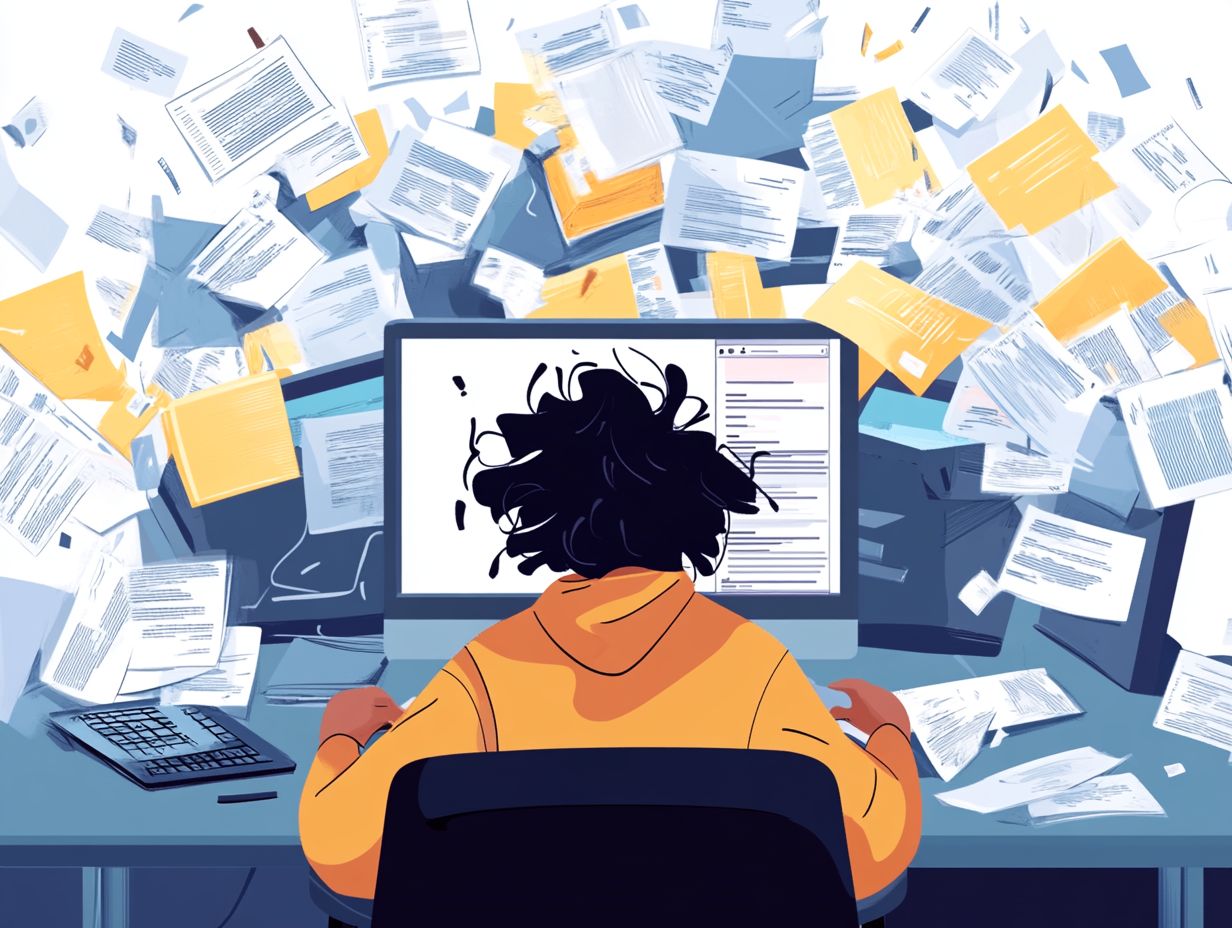
Balancing user experience with copyright protection is essential for streaming services like yours. They strive to cultivate a collaborative culture while ensuring the rights of content creators are upheld.
This intricate balance enhances consumer trust and lays the groundwork for sustainable creativity. By incorporating features such as transparent licensing information and straightforward reporting mechanisms for copyright infringements, these platforms can foster an environment where you feel safe and empowered.
Take Spotify, for instance. Their initiative allows artists to access detailed analytics about their streams, significantly boosting transparency. Likewise, platforms like YouTube have rolled out a Content ID system, which identifies copyrighted material, striking a harmonious balance that benefits both users and creators alike.
These implementations show how prioritizing user experience can seamlessly coexist with strong copyright protections.
Possible Solutions to Copyright Challenges
Possible solutions to copyright challenges lie in working together between copyright owners and streaming services. This collaborative spirit is vital for innovative approaches to content distribution and rights management.
Such partnerships ensure that both creators and platforms can thrive in a dynamic digital landscape.
Collaboration between Copyright Owners and Streaming Services
Collaboration between copyright owners and streaming services is crucial for crafting effective licensing agreements. These agreements not only protect creative works but also ensure accessibility for consumers.
For example, successful partnerships between major music labels and platforms like Spotify have produced dynamic playlists. These playlists highlight popular hits while shining a spotlight on emerging artists.
Similarly, when film studios team up with platforms like Netflix, they enable exclusive releases that enrich your viewing experience. These collaborations provide filmmakers with the necessary revenue to fund future projects.
Ultimately, these synergies foster a more vibrant creative ecosystem that benefits everyone involved.
Updates to Copyright Laws and Regulations
Updates to copyright laws and regulations are essential for tackling modern copyright challenges. Technology transfer and the global landscape of content distribution have changed the game.
As you navigate the ever-evolving creative industry, it’s clear that existing legal frameworks are lagging behind rapid advancements. Digital platforms and streaming services are revolutionizing how content is consumed and shared.
This shift creates a murky environment regarding ownership and fair use. To effectively protect the rights of creators while nurturing innovation, policymakers must prioritize comprehensive updates.
These legislative reforms should address unique challenges posed by emerging technologies. They need to establish a cohesive structure that aligns with today s dynamic marketplace, ensuring protection that resonates with both creators and consumers alike.
Frequently Asked Questions
What are the main challenges of copyright in the age of streaming?
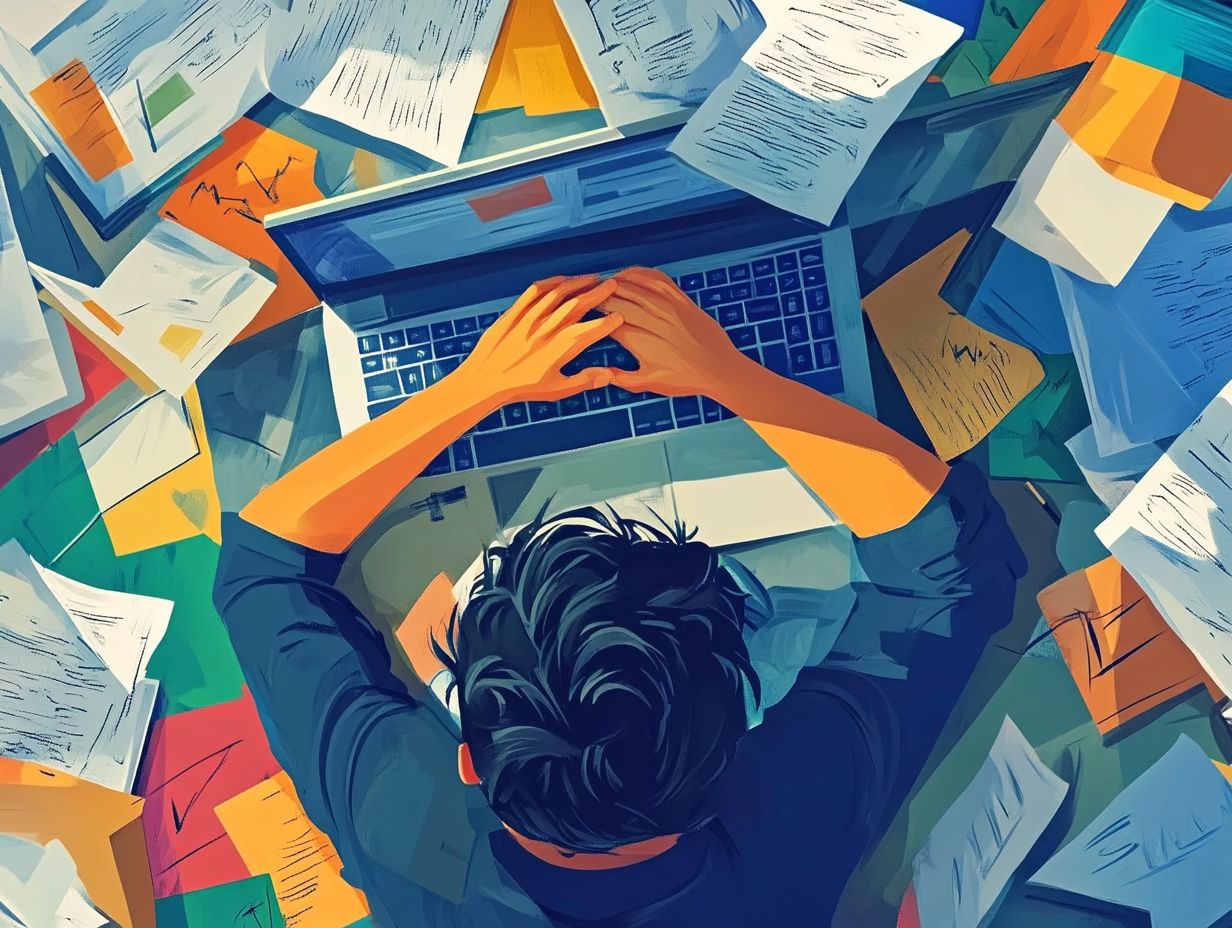
The main challenges of copyright in the age of streaming include determining fair compensation for artists and content creators. Additionally, enforcing copyright laws on digital platforms and addressing issues of piracy and unauthorized use of copyrighted material are also significant concerns.
How does the rise of streaming services impact traditional media industries?
The rise of streaming services has greatly impacted traditional media industries. It changes how people consume media and disrupts long-standing business models.
This shift has led to challenges in adapting to the new streaming landscape and finding ways to compete with these services.
What challenges do streaming platforms face in terms of copyright?
Streaming platforms struggle with obtaining proper licenses for the content they offer.
They must also monitor and prevent unauthorized use of copyrighted material while navigating complex international copyright laws.
What are some potential solutions to the challenges of copyright in the age of streaming?
Potential solutions include establishing fair compensation models for artists.
Stricter regulations and enforcement measures for digital platforms are also needed. Education on copyright laws is essential too.
How does the global nature of streaming affect copyright challenges?
The global nature of streaming complicates the enforcement of copyright laws.
Each country has different laws, making it hard for content creators and platforms to operate internationally.
What role do users play in the copyright challenges of streaming?
Users significantly impact copyright challenges as they consume and share content.
Unauthorized sharing, which includes actions like distributing content without permission, and downloading can lead to copyright infringement. This complicates the legal landscape for streaming services and content creators.

